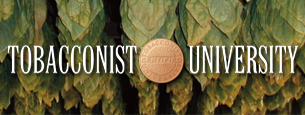The side canvas on this large and extraordinary shadegrown tobacco field has been partially lifted for a short while to allow excess humidity out.
Sunday, March 2, 2014
Reverse Cigar Blending: "Tasting Components"
The process of creating a cigar blend is daunting and there can be thousands of failures before a final blend is deemed worthy of production. Yet, this is just the beginning. Once a master blend recipe has been created, it must be tweaked to deliver its flavor and character in different vitolas. Some cigar makers will further complicate the process by engineering each vitola to deliver a similar taste while others will tweak the blends to emphasize certain aspects of the components. Lastly, a great cigar maker will be able to replicate the cigar’s flavor profile consistently, year after year. Ultimately, cigar blending is its own art form which requires a lot of experience and talent.
While cigar blending is the process of putting tobacco leaves together to create a cigar, reverse blending is the process of deconstructing a cigar and analyzing its’ component leaves.
The TU method for reverse blending and studying a cigar’s components is called Ashtray Analysis.
Ashtray Analysis is the process of removing the cigar’s component leaves one at a time and burning them in an ashtray. You can smell the tobacco leaf’s characteristics while it is burning in the ashtray.
WARNING: use a bucket of water to extinguish the burning tobacco leaves and keep a fire extinguisher at the ready.
Method
Wrapper and binder leaves will separate fairly easily and it should be easy to distinguish between them.
Burn the wrapper in the ashtray and smell the smoke. After you have smelled enough, put the leaf in a bucket of water and make sure nothing is left burning in the ashtray. Repeat this step with the binder. Once you remove the binder, the bunch will continue to hold its cylindrical shape and you will have to finesse the filler leaves apart. Try to separate the different leaves from each other: segregate by color and texture. Once you have three to five filler leaves distinguished and separated, you can discard the smaller pieces of tobacco. Don’t get discouraged if you can’t differentiate between all the filler leaves.
Hint: the ligero will be black(ish) and should be towards the center of the cigar. It will have the strongest and/or most pungent aroma of all the filler leaves.
What did you learn? In the end, this exercise will give you some insight into the individual leaves that went into creating your cigar. And, hopefully, a new appreciation for the millions of tiny steps that go into creating a great cigar.
Labels:
ashtray analysis
,
Blend R&D
,
cigar
,
cigar blend
,
cigar blending
,
cigar taste
,
cigar tasting
,
R&D
,
Taste R&D
Subscribe to:
Posts
(
Atom
)










